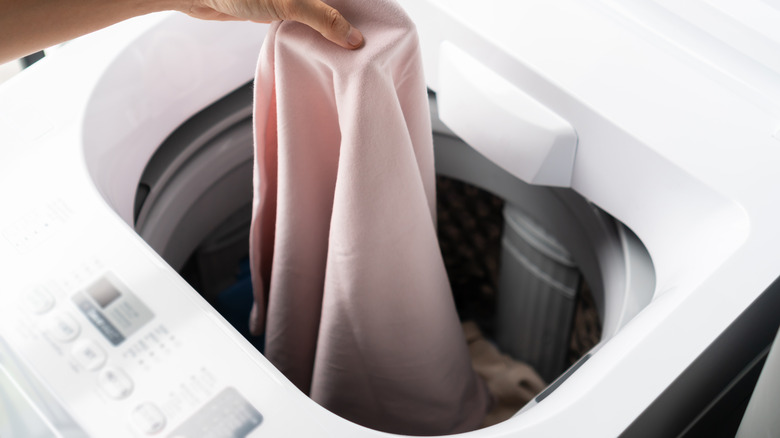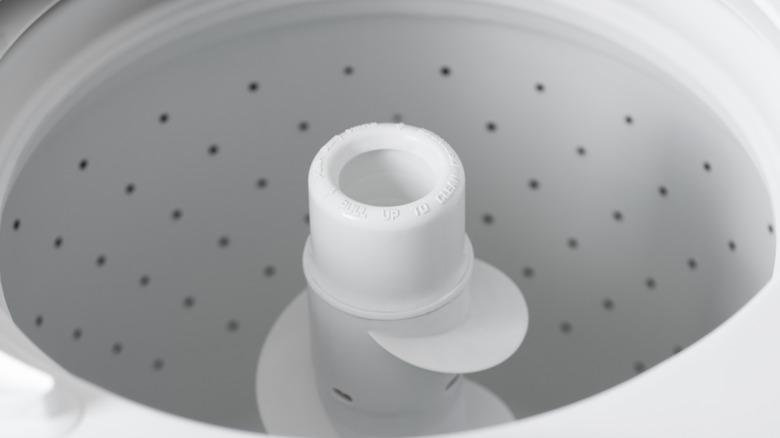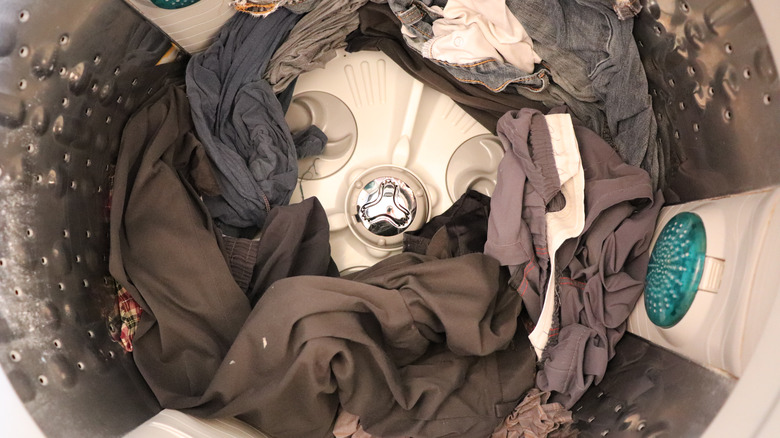Impeller Vs. Agitator: Which Washing Machine Is Best For Your Home?
We've come a long way from the days when decisions over which washing machine to buy came down to brand loyalty, size, color, and energy efficiency because most of our mothers' and grandmothers' machines were built the same way — top-loaders that came with a central pole first called "gyrators," and which later became known as agitators, per Syracuse University Library. But today, we are spoilt for choice when it comes to choosing the kind of laundry appliances we'd like to have in our homes.
If you're in the market for a new washer and have already decided that a front-load appliance isn't for you, there is still the need to work out whether you want to get a top loader with an agitator or an impeller, both of which come with their pros and cons. It might be natural for you to choose the same type of machine you've always had and are familiar with, but if you wanted to go with something different for reasons that might include cleaner laundry and energy efficiency, this could be the best time to make a switch.
How a top-load washing machine with an agitator works
Those of us who have been around top-load washing machines for as long as we can remember will likely recognize an agitator, maybe even without knowing what it is called. This type of washer comes with a centrally-located stanchion, which gets clothes clean by rubbing against them to remove stains. These centrally-located devices aren't static; rather, they move in a back-and-forth motion, and for agitators to work effectively, they need to get as close to your dirty clothes as possible. This is one reason why you can't overload your washer: Because chances are your clothing will not get clean as a result.
There are several reasons why critics of this type of washer aren't too keen on using it. Agitators are thought to be particularly rough on clothing, but it is a complaint that appliance companies like Maytag feel is unjustified. Agitators also take up plenty of room, which leaves a smaller actual wash capacity overall. And because the wash needs to be completely submerged in water, top-load washers of this type are considered less energy efficient than other models on the market today.
How a top-load washing machine with an impeller works
Top-load machines don't just come with the bulky shaft in the middle of the drum these days. In what some product reviewers consider an advancement, a number of machines now come with a textured plate located at the bottom of the wash basket known as an impeller.
The disc is designed with fins in some models or with cones and ridges in others, and it works by rotating at the bottom of the drum, causing clothes to rub against each other, which is how they become clean. Because a hard piece of plastic isn't potentially roughing up clothes, the washing action in an impeller is far gentler, which means your clothes will likely last longer. Without the agitator in the middle, you also get more room in the drum, which means you can fit bulkier items like duvets without a problem. Environmentalists are also inclined to give impellers two thumbs up because they use far less water, even if the machines take more time to work through a load of laundry and use more energy in the process. The absence of the central agitator also means there is a chance that your clothes may come out less clean, although that shouldn't be a problem if your clothes don't get too soiled.


